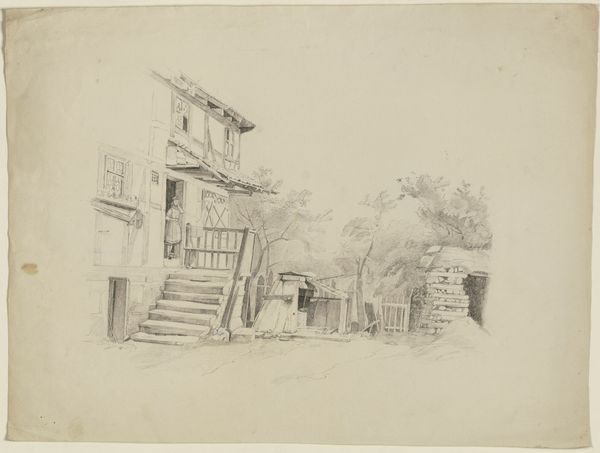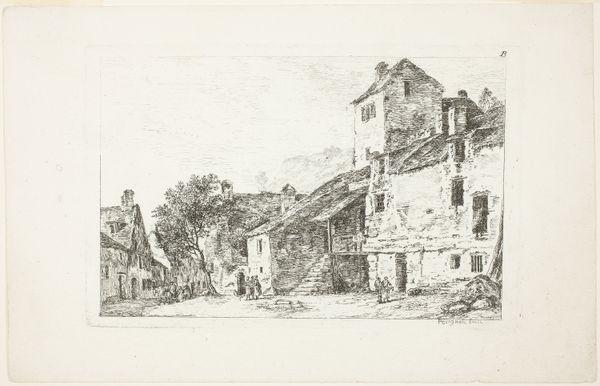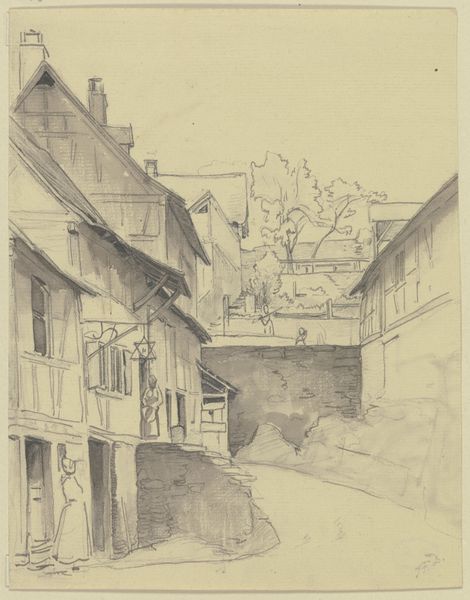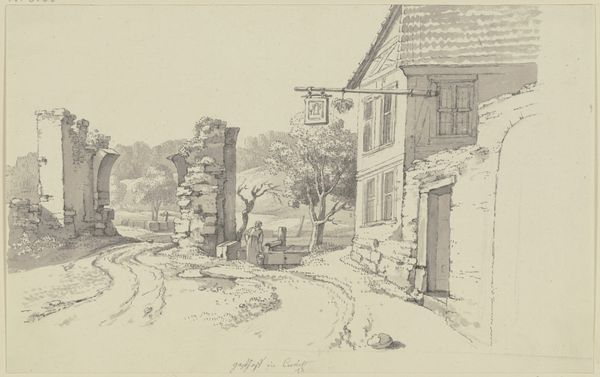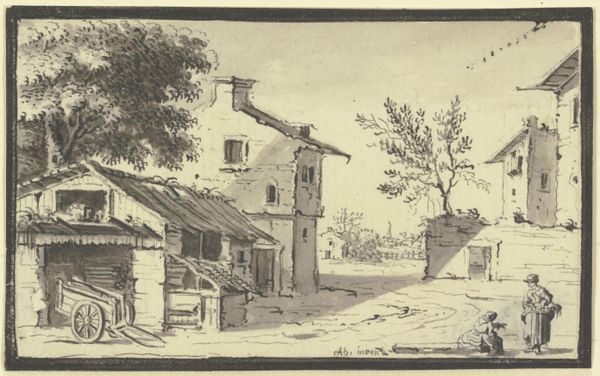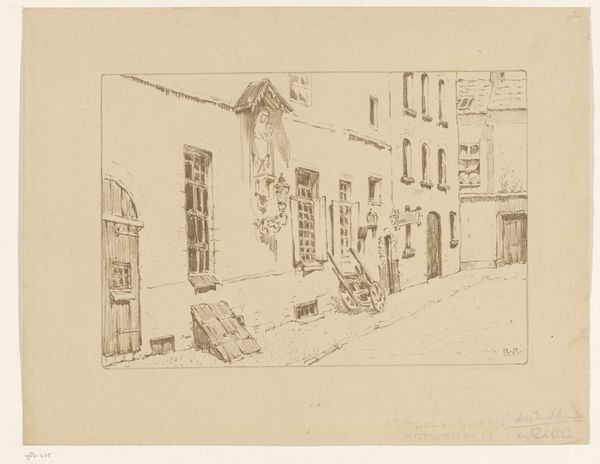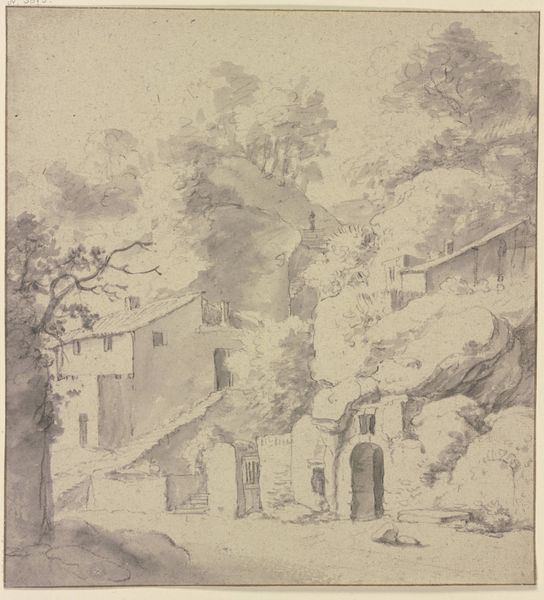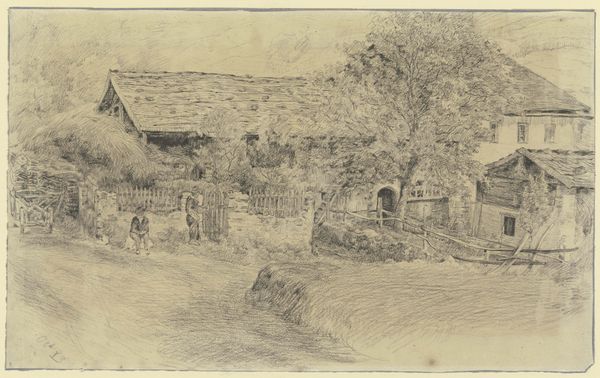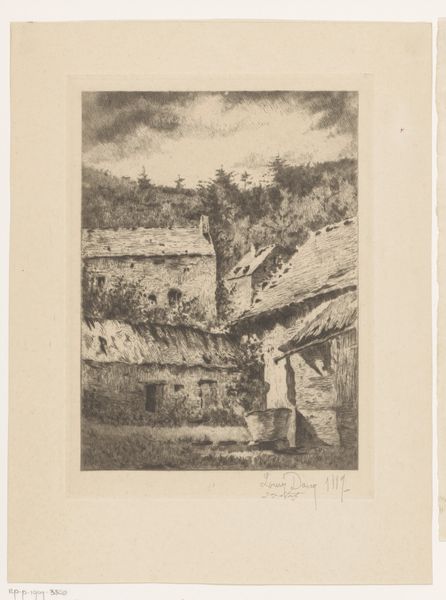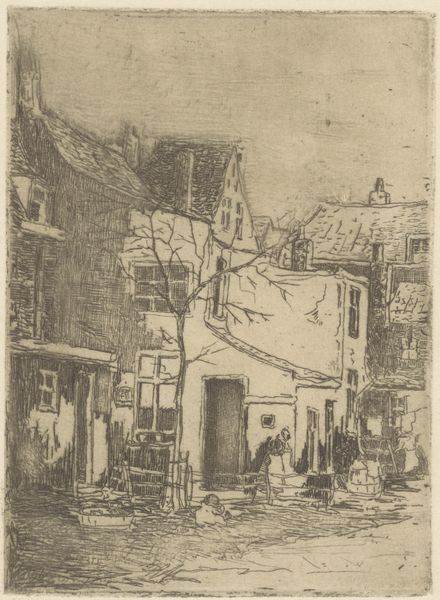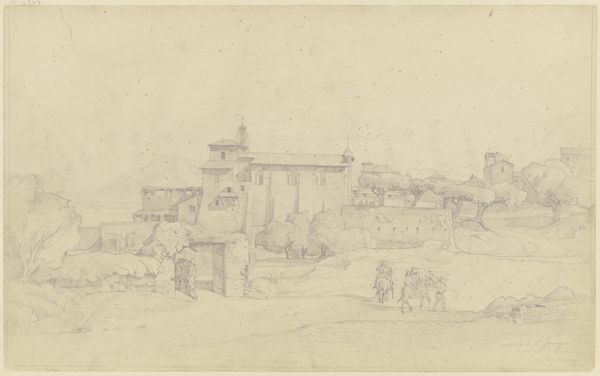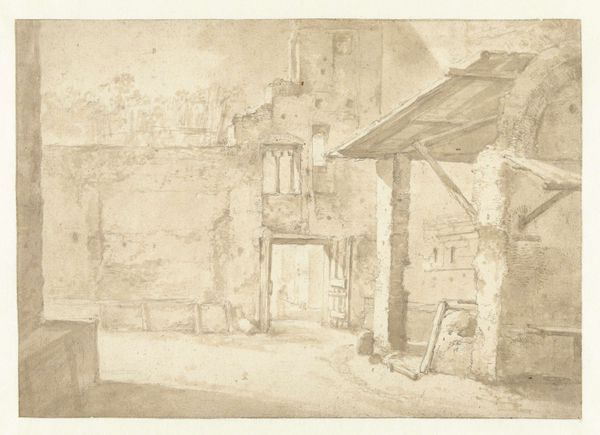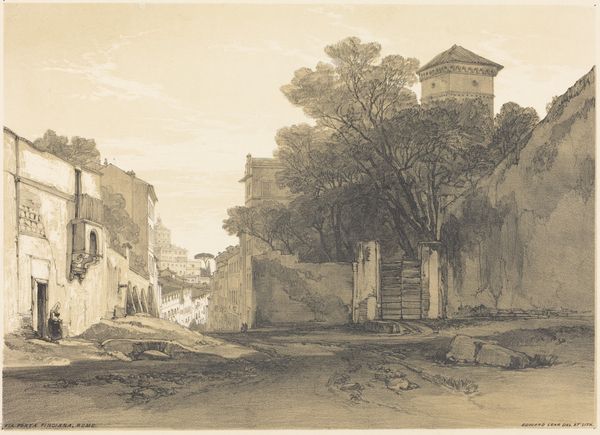
Copyright: Public Domain
Curator: Let's turn our attention to "Dielmanns Altenahr an der Ahr," a pencil drawing created by Johann Friedrich Hoff in 1852. It is currently held in the Städel Museum collection. Editor: It has such a tender, quiet mood. The sketchy lines create a dreamy atmosphere. It makes me think of simpler times, looking into another world, perhaps idealized, almost like looking through memory itself. Curator: Precisely. Hoff captures the essence of German Romanticism, where the local and familiar take on greater symbolic significance. Look closely, and you’ll notice that the architectural style tells a story. The way the houses seem almost organically integrated with the landscape... Editor: I do appreciate the layered effect Hoff created with his tonal variations, establishing the relative positions in space. Notice the foreground is weighted with dark value ranges to bring a certain crispness and emphasis compared to the rest of the background fading into hazy thin lines. What do you see there in terms of storytelling? Curator: It suggests the continuity between generations, which could have deep significance in terms of German cultural identity in the mid-19th century. We see children clustered near what appears to be a musician in the left foreground. Up above them, there’s a mother embracing her child. Each of them in such close proximity suggests an intimate connection to family life and social bonds. Editor: I see it now. What seemed purely aesthetic now vibrates with narratives. These scenes almost feel like frozen moments, snapshots, preserved in time due to the incomplete or sketchy qualities. Curator: This evokes nostalgia for tradition but could also serve as a call for cultural and political cohesion during the pre-unification period. Hoff’s emphasis on community reflects a collective desire for stability, peace, and connection. Editor: It’s fascinating how the artistic choices in rendering create a piece that's not just pretty, but rich with cultural meaning. Thank you. Curator: A testament to art’s ability to reflect our deepest desires and hopes, then and now. Thank you as well.
Comments
No comments
Be the first to comment and join the conversation on the ultimate creative platform.
